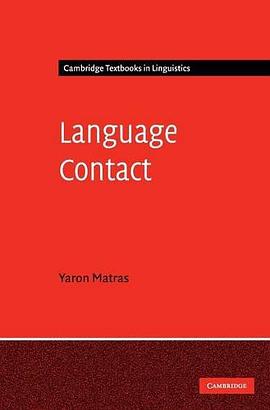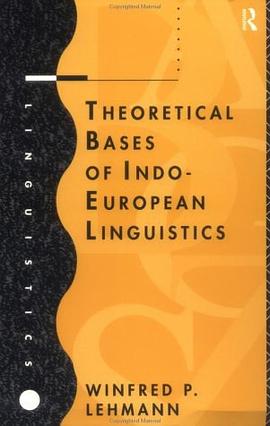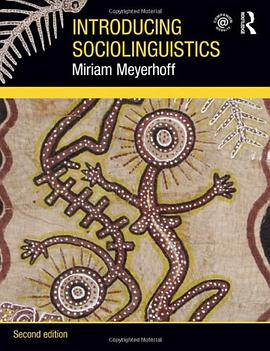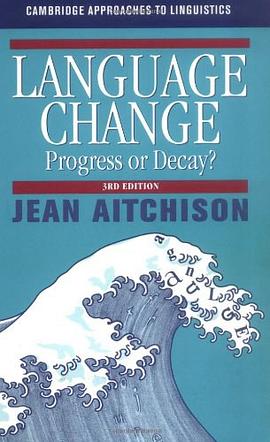

具体描述
《第二语言习得研究概况》主要内容简介:Understanding how people learn and fail to learn second and foreign languages is increasingly recognized as a critical social and psycholinguistic issue. Second languages are vitally important to diverse groups of people, ranging from refugees to college students facing foreign language requirements. An Introduction to Second Language Acquisition Research provides a synthesis of empirical findings on second and foreign language learning by children and adults. emphasising the desing and execution of appropriate research. The book assumes no prior knowledge of SLA. and introduces major topics such as the scope of SLA research. research methodology for gathering and analysing data, the history and development of SLA research and substantive findings on interlanguage development. explanations for success and failure, the role of theory in social science, current theories of SLA. and the effects of formal instruction on language learning. The volume also includes an extensive bibliography and suggestions for further reading, as well as discussion questions and problems to accompany each chapter. An Introduction to Second Language Acquisition Researc is a comprehensive, yet highly accessible study which will prove invaluable for language teachers and teachers in raining, as well as discusion questions and problems to accompany each chapter. An Introduction to Second Language Acquisition Research is a comprehensive, yet highly accessible study which will prove invaluable for language teachers and teachers in training, as well as students in applied linguistics, linguistics, psychology, psycholinguistics and foreign language education. Diane Larsen-Freeman is a Senior Faculty Member in the MAT Program at the Sehool of International Training.Vermont. USA and Michael H. Long is Professor of English as a Second Language, at the University of Hawaii,USA.
作者简介
目录信息
General Editor's Preface
Authors' Preface
Acknowledgements
1 Introduction
1.1 The place of second language in the world today
1.2 Why study second language acquisition?
1.3 Development of the field of study of second language acquisition
1.4 The scope of second lanb, uage acquisition research
Notes
Activities
Suggestions for further reading
2 Second language acquisition research methodology
2.1 Introduction
2.2 Qualitative versus quantitative methodologies
2.2.1 Introspection
2.2.2 Participant observatiorf
2.2.3 Non-participant observation
2.2.4 Focused description
2.2.5 Pre-experiment
2.2.6 Quasi-experimem
2.2.7 Experiment
2.3 Setting
2.4 Instrumentation: production data elicitation
2.5 Variability problem
2.6 Instrumentation: intuitional data elicitation
2.7 Instrumentation: use of miniature,languages
2.8 Instrumentation: affective variables
2.9 Instruments from other disciplines
2.10 Measuring learner performance
2.10.1 Defining language proficiency
2.10.2 Defining an acquisition point
2.10.3 Taskversus test
2.10.4 An index of development
2.11 Conclusion
Notes
Activities
Suggestions for further reading
3 SLA: Types of data analysis
3.1 Introduction
3.2 Contrastive analysis
3.2.1 The contrastive analysis hypothesis
3.2.2 Language acquisition as habit formation
3.2.3 The CAH refuted
3.3 Error analysis
3.3.1 Strong versus weak Versions of the CAH
3.3.2 Language acquisition as rule formation
3.3.3 Interlingual versus intralingual errors
3.3.4 Interlanguage
3.3.5 Error analysis criticized
3.4 Performance analysis
3.4.1 Morpheme studies
3.4.2 Developmental sequence
3.4.3 Learner strategies
3.4.4 The acquisition of forms and functions
3.4.5 Formulaic utterances
3.5 Discourse analysis
3.5.1 Conversational analysi's
3.5.2 Other applications of discourse analysis
3.6 Conclusion
Notes
Activities
Suggestions for further reading
4 Interlanguage studies: Substantive fmdings
4.1 Introduction
4.2 ILs vary systematically
4.2.1 Free variation
4.2.2 Systematic vatriability
4.2.3 Variability resulting from amount of attention
4.2.4 Free variation as an impetus for development
4.2.5 Multiple explanations for variability
4.3 ILs exhibit common acquisition orders and developmental sequences
4.3.1 Acquisition order: morpheme studies
4.3.2 Developmental sequence: interrogatives
4.3.3 Developmental sequence: negation
4.4 ILs are influenced by the learner's L1
4.4.1 The effect of the L1 on SLA: how
4.4.2 The effect of the L1 on SLA: when (markedness)
4.4.3 The effect of the L1 on SLA: when (perceived transferability)
Notes
Activities
Suggestions for further reading
5 The linguistic environment for language acquisition
5.1 Linguistic input for first language acquisition
5.2 Linguistic input for second language acquisition
5.2.1 Linguistic adjustments to non-native speakers
5.2.2 Conversational adjustments to non-native speakers
5.3 Does the linguistic environment make a difference?
5.3.1 The effect of deviant input
5.3.2 The role of conversation in developing syntax
5.3.3 Input frequency-accuracy order relationships
5.3.4 Input modification and second languagecomprehension
5.3.5 Comprehensible input and second language
acquisition
Notes
Activities
Suggestions for further reading
6 Explanations for differential success among second language learners
6.1 Introduction
6.2 Age
6.2.1 Studies of age and SLA
6.2.2 Explanations for age-related differences
6.3 Aptitude
6.4 Social-psychological factors
6.4.1 Motivation
6.4.2 Attitude
6.5 Personality
6.6 Cognitive style
6.7 Hemisphere specialization
6.8 Learning strategies
6.9 Other factors
6.10 Conclusion
Notes
Activities
Suggestions for further reading
7 Theories in second language acquisition
7.1 Introduction
7.2 Theory construction and social science
7.2.1 The role of theories in making research cumulative
7.2.2 Purposes a~d types of theory
7.3 Nativist theories of SLA
7.3.1 General characteristics
7.3.2 Chomsky's Universal Grammar and SLA
7.3.3 A critique of language-specific nativist theories
7.3.4 Krashen's Monitor Theory
7.3.5 A critique of Monitor Theory
7.4 Environmentalist theories of SLA
7.4.1 General characteristics
7.4,2 Schumann's Pidginization Hypothesis and Acculturation Model
7.4.3 A critique of the Pidginization Hypothesis and Acculturation Model
7.5 Interactionisttheories of SLA
7.5.1 General characteristics
7.5.2 Givon's Functional-Typological Theory and SLA
7.5.3 A critique of Givon's theory in SLA research
7.5.4 The ZISA's group's Multidimensional Model
7.5.5 A critique of the Multidimensional Model
7.6 Conclusion: the state of SLA theories
7.6.1 Comparing and evaluating theories
7.6.2 A note of caution
Notes
Activities
Suggestions for further reading
8 Instructed second language acquisition
8.1 Introduction
8.2 Early research on the effect of instruction, and some claimed implications
8.3 The effect of instruction on accuracy orders and developmental sequences
8.4 The effect of instruction on acquisition processes
8.5 The effect of instruction on rate of acquisition
8.6 The effect of instruction on the level of ultimate SL attainment
8.7 Conclusion
8.8 Explanations
8.9 Researching instructional design features
Notes
Activities
Suggestions for further reading
Epilogue
Bibliography
Index
· · · · · · (收起)
读后感
评分
评分
评分
评分
用户评价
详细。但乱。二语习得还是很新的学科。
评分详细。但乱。二语习得还是很新的学科。
评分SLA经典之作
评分详细。但乱。二语习得还是很新的学科。
评分SLA经典之作
相关图书
本站所有内容均为互联网搜索引擎提供的公开搜索信息,本站不存储任何数据与内容,任何内容与数据均与本站无关,如有需要请联系相关搜索引擎包括但不限于百度,google,bing,sogou 等
© 2025 book.quotespace.org All Rights Reserved. 小美书屋 版权所有




















